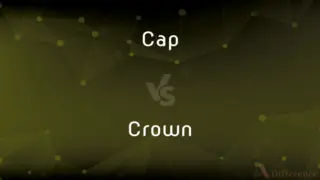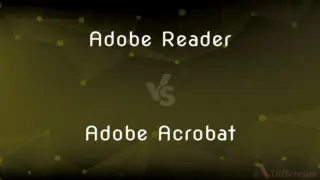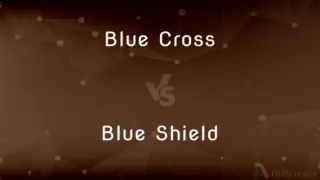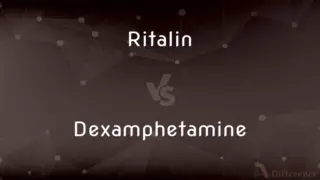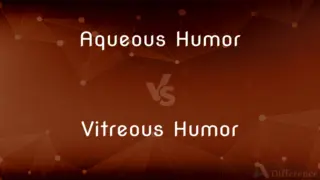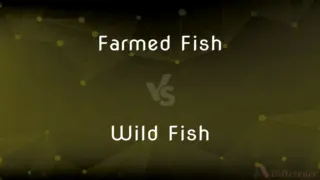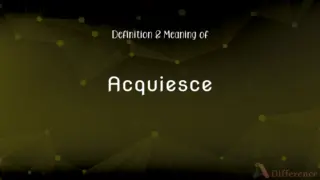Orle vs. Torse — What's the Difference?
Edited by Tayyaba Rehman — By Maham Liaqat — Updated on May 6, 2024
An orle is a narrow band that follows the shield's edge inside the field, serving as a border, while a torse is a twisted roll of fabric worn on top of a knight's helmet, often matching the main colors of the shield.

Difference Between Orle and Torse
Table of Contents
ADVERTISEMENT
Key Differences
An orle is a heraldic charge, a thin band that does not touch the edges of the shield, essentially acting as a border within, whereas a torse consists of a twisted roll of fabric designed to hold and stabilize the crest on top of a helmet.
In heraldry, the orle is used either as a frame for the main charge or as a secondary charge around the shield's edge, on the other hand, the torse serves a practical purpose in historical armor by providing a base for the crest and a decorative element.
The orle can be plain or decorated with other charges and is often used to signify different familial or honorary distinctions, while the torse typically appears in two alternating tinctures, which usually are the principal colors of the arms or livery.
The use of an orle can sometimes signify protection or reinforcement of the bearer's rights and properties, whereas the torse, by displaying the main heraldic colors, reinforces the identity and visual continuity of the armorial bearings.
While an orle encircles the shield within its field and is always visible from the front, the torse is only seen atop the helmet, subtly enhancing the heraldic display without encroaching on the shield’s design.
ADVERTISEMENT
Comparison Chart
Definition
A narrow band inside the edge of the shield
A twisted roll of fabric on top of a helmet
Heraldic Position
Within the shield
On the helmet
Purpose
Decorative, signifies border or protection
Decorative, supports the crest
Appearance
Often plain or charged
Twisted fabric in alternating colors
Symbolic Meaning
Protection, reinforcement of rights
Identity, continuity of colors
Compare with Definitions
Orle
Symbolic of reinforcement or protection.
The orle around the shield symbolized safeguarding heritage.
Torse
Sits above the shield in heraldic achievements.
Atop the helmet, the torse supported a magnificent crest.
Orle
Appears within the shield’s field.
The knight’s orle was a subtle yet distinct red.
Torse
Enhances the visual continuity in armorial bearings.
His torse and shield shared the same tinctures, tying the ensemble together.
Orle
Used as a charge or subordinary in heraldry.
His shield bore an orle charged with eight stars.
Torse
A wreath or twisted band of fabric on a helmet.
The torse was made of blue and white silk to match the shield.
Orle
A narrow border not touching the edges of a shield.
The family crest was framed by an orle of gold.
Torse
Alternates in the livery colors of the bearer.
The torse displayed the knight’s colors of green and black.
Orle
Can be decorated with other heraldic charges.
The orle was adorned with small fleurs-de-lis.
Torse
Functions as a base for the crest.
The torse held the lion crest firmly above the helm.
Orle
(heraldry) A bordure that runs around the outline of a shield without touching the edge.
Torse
In heraldry, a torse or wreath is a twisted roll of fabric laid about the top of the helmet and the base of the crest. It has the dual purpose of masking the join between helm and crest, and of holding the mantling in place.
Orle
(heraldry) The wreath, or chaplet, surmounting or encircling the helmet of a knight and bearing the crest; a torse.
Torse
(heraldry) A twist of cloth or wreath underneath and forming part of a crest; an orle, a wreath. It is customarily shown with six twists, the first tincture being the tincture of the field, the second the tincture of the metal, and so on.
Orle
(architecture) A fillet under the ovolo of a capital.
Torse
A wreath.
Orle
A bearing, in the form of a fillet, round the shield, within, but at some distance from, the border.
Torse
A developable surface. See under Developable.
Orle
The wreath, or chaplet, surmounting or encircling the helmet of a knight and bearing the crest.
Common Curiosities
What is the purpose of an orle in heraldry?
An orle serves both decorative and symbolic purposes, often representing protection or reinforcement around the shield.
How is a torse used in heraldic displays?
The torse functions as a practical and decorative support for the crest above a helmet in heraldic achievements.
Can an orle contain other charges within it?
Yes, orles can be charged with other small symbols to signify different familial or honorary distinctions.
How does the placement of an orle differ from other heraldic charges?
Unlike most charges that are placed directly on the shield’s field, an orle sits as a border within the edge, not touching the shield’s actual perimeter.
What colors are used in a torse?
The torse typically uses two alternating colors, often the principal colors of the bearer’s arms.
Does the torse have any practical function today?
In modern times, the torse is primarily ceremonial and used in heraldic art to maintain traditional aesthetics.
What historical significance does the torse hold?
Historically, the torse helped in securing the crest on the helmet during jousts and battles, and visually signified knightly or noble status.
How does an orle impact the interpretation of a coat of arms?
An orle can emphasize certain aspects of the shield’s symbolism, often enhancing the overall message or history portrayed by the coat of arms.
Is the torse essential in a full heraldic achievement?
While not mandatory, the torse is commonly used in complete heraldic displays to enhance the visual and symbolic link between the helmet and crest.
Are there variations in the design of an orle?
Yes, orles can vary in thickness and design, sometimes incorporating other decorative elements to reflect specific meanings or family ties.
Share Your Discovery

Previous Comparison
Excavator vs. Bulldozer
Next Comparison
Yarn vs. ThreadAuthor Spotlight
Written by
Maham LiaqatEdited by
Tayyaba RehmanTayyaba Rehman is a distinguished writer, currently serving as a primary contributor to askdifference.com. As a researcher in semantics and etymology, Tayyaba's passion for the complexity of languages and their distinctions has found a perfect home on the platform. Tayyaba delves into the intricacies of language, distinguishing between commonly confused words and phrases, thereby providing clarity for readers worldwide.














